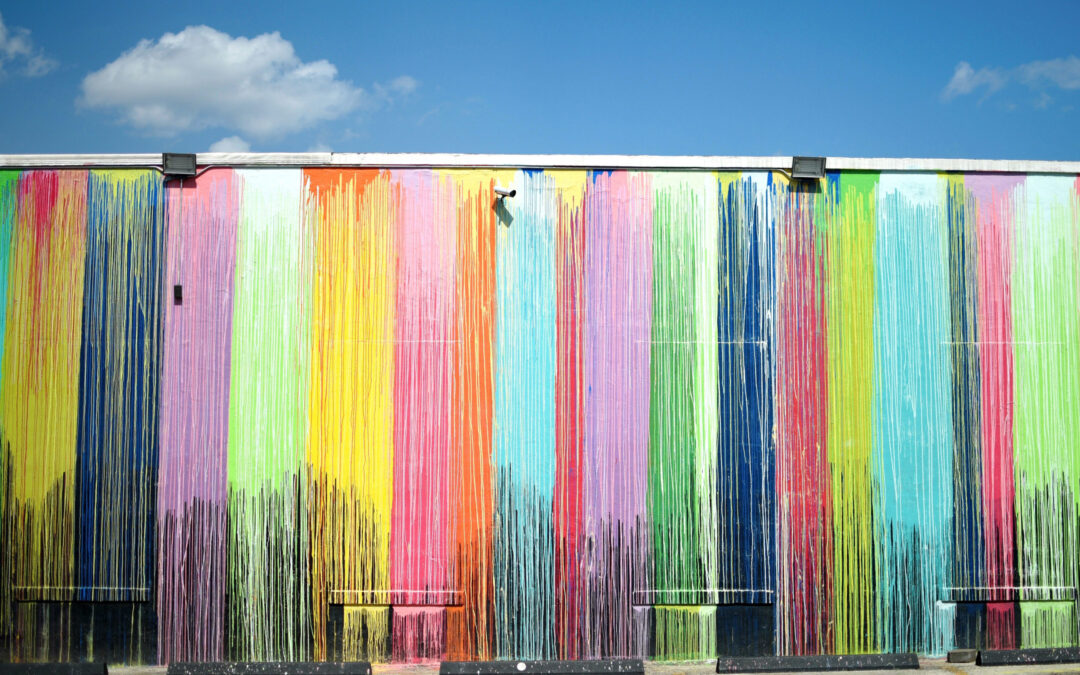This past week, many Asian Americans and Pacific Islanders welcomed the Lunar New Year under the dark shadow of spiking horrific violence targeting Asian elders, particularly in the Bay Area and in New York City. During the biggest holiday season for many AAPI cultures — one that emphasizes family ties — the mood is particularly grim given that the victims who have been killed or seriously injured are beloved grandparents, parents, and elders in the community.
Even before these incidents, terms like “China virus” and “kung flu” from those in positions of power seemed to unleash and validate the use of hateful language, resulting in more than 2,800 first-hand reports of anti-Asian hate incidents from March 19 through December 31, 2020, according to the organization Stop AAPI Hate. In its first week in office, the Biden administration issued a statement condemning racist and xenophobic speech and actions against AAPIs, but it remains to be seen whether these trends will abate as the pandemic rages on.
Even as I prepared my own family to celebrate the Lunar New Year with this heavy news hanging over us, I was heartened to read some of the messages of solidarity and support from those in philanthropy. However, as a whole, my observation from working in philanthropy for more than 15 years is that AAPIs are often left out of conversations around race, either purposefully or by neglect. There have been numerous conversations in our sector where I’ve encountered arguments that AAPIs are somehow not considered people of color, or that countering anti-AAPI racism should not be an explicit part of DEI and anti-racist work.
This has to stop.
Racial equity conversations have increasingly been rightfully front and center in philanthropy. In particular, the focus on anti-Black racism and reckoning with America’s history of police brutality, redlining, and the legacy of slavery is incredibly important and long overdue. We need to continue to lean into this conversation and to fund and advocate for solutions to systemic injustices affecting Black and brown communities. Most of the civil right gains of non-white Americans like me have been because of the incredible work and courage of my Black and brown brothers and sisters who came before us. I and other AAPIs owe them an immeasurable debt.
My hope in raising this topic is not in any way to take away from the efforts to support other communities; our energy for learning and creating a better world should not be zero-sum in nature.
However, our commitment to embracing DEI is incomplete if we do not recognize the interwoven nature of racism. To be sure, the history of AAPIs and our relationship to Black and brown communities has been a complex one. For one, the “model minority myth” has proven to be a convenient tool for both hiding the discrimination against many AAPIs and for serving as a cudgel to divide and alienate us from other communities of color, pitting us against one another.
AAPIs are often viewed as being “white adjacent,” which paints us as a monolith instead of a multicultural group. This means that key distinctions that should matter to those who care about racial inequality are overlooked. For instance, according to the COVID Tracking Project, through February 14, 2021, Native Hawaiians and Pacific Islanders were most likely of any racial group in the U.S. to have contracted COVID-19. But I have not seen this data point discussed anywhere.
It is essential that funders interrogate whether their organization is inadvertently perpetuating inequality through erasing AAPI voices and perspectives. It’s safe to assume that you may be unless you’ve taken specific actions, as erasure and neglect tend to be the default modes of American culture towards AAPIs.
In fact, recent CEP research on how foundations have responded to the multiple compounding crises of the past year shows that prior to the pandemic, few foundations were supporting AAPI communities with significant portions of their funding. Further, even with the recent large spike in hate incidents toward AAPIs and the fact that around one quarter of all AAPIs are frontline workers, not many foundations indicated making new efforts at supporting AAPI communities in the last year — including “a sizeable percentage” of funders responding that they were unsure whether they increased the amount of funding going to organizations created and led by individuals from AAPI communities. As the report authors note in their conclusion, these findings suggest potentially significant oversights when it comes to how foundations have supported these communities.
To be clear, I am not arguing that funding to Black and Latinx communities be redirected to AAPI ones. Rather, I am arguing that funders should enlarge the available resources during these proverbial “rainy day” times AND deepen their understanding of who is missing from conversations about our current crises.
Here are some specific ways that funders and sector leaders can act:
Eschew simplistic Black and white paradigms on race. The story of race in America is a multifaceted and deeply complex one. To be sure, the unique horrors of slavery and the genocide of Indigenous peoples should be at the forefront of the reckoning of our history. We must also add the stories of other marginalized communities to this reckoning for an even more complete picture of our collective past.
Increasingly, I have witnessed and learned of DEI trainings or staff discussions in our sector that have explicitly minimized or ignored the role of AAPIs. I have also been in several head-scratching conversations outside of my organization where it was implied that as an Asian American, I am somehow not a person of color. Add to that the discouragement I have felt when hearing CEP’s leadership described as all white, despite the fact that of our four vice presidents, two are white and two are not. This type of erasure is an all too common experience among AAPIs.
That is why I was particularly grateful that CEP engaged in the Intercultural Development Inventory (IDI) as a staff a couple of years ago. The assessment was organization-wide as well as individual, with results focusing not just on race but also on levels of cross-cultural competence and the naming of cultural defaults in communication styles and decision-making. Using the IDI was a rich and challenging process that addressed racial equity without erasing any races or cultures in the process. This should be true of all organizational DEI efforts. If AAPIs, Latinx, Indigenous, and other communities are missing from your organization’s conversations about racism, you’re doing it wrong.
Fair and transparent hiring and compensation practices. Does your organization decline to disclose salaries on job postings? If a third party were to conduct a payroll audit, would they find that people of color and/or women are paid differently than their white male counterparts? If so, please work on thyself first before preaching to the sector about anti-racism.
I was recently talking to an Asian-American woman who left a foundation after she found out she was grossly underpaid compared to her white male colleagues for the same work. She raised the issue repeatedly, but eventually quit when it remained unaddressed. That very same foundation released a statement against anti-AAPI racism recently. While I applaud any statements of acknowledgement and solidarity during this time, funders simply cannot be hypocritical on these matters. Actions truly speak louder than words.
It also goes without saying that sector leaders and organizations should beware of seeking consulting work or advice from people of color — particularly on issues of race — without adequately compensating them for their time. With the preponderance of resources at funders’ disposal and many excellent experts available for hire, it is not the job of people of color to educate others for free.
Avoid viewing AAPIs as a monolith. No one AAPI subculture such as Chinese-, Korean-, or Indian-American culture is representative of all AAPIs. Differences in life outcomes and other social measures of well-being between and within groups can be vast. As far as your program areas serve AAPIs, be sure to disaggregate the data to get the fullest picture.
Ensure that your internal organizational culture does not perpetuate a view of AAPIs as foreigners. What is considered “acceptable” in terms of upbringing, food customs, or religious observance at your organization? Do the prevailing white or Black American tastes and preferences dominate what is considered “normal” and “good” in staff events and conversations, to the exclusion of other cultures?
Many of my fellow AAPI colleagues in our sector can share with you workplace or childhood lunchroom horror stories about how deviations from that norm are publicly labeled and treated as strange or exotic. It’s up to all of us to ensure that we are not perpetuating these views.
Finally, get educated on the history of anti-AAPI racism in America. I put this one last because learning and reflecting is not the same as taking action, even as it is still a crucial part of the work.
For most of us born before the millennia, AAPI history was simply not covered in our history textbooks and curriculum. For those who are still learning, it goes beyond what you may have heard about the horrific internment of Japanese Americans during World War II or the Chinese Exclusion Act (though those are good places to start). AAPI history begins before our nation’s founding and stretches until today, where AAPIs are the least represented in senior management positions across multiple key sectors when compared with other races, despite some segments of AAPIs having the highest level of education attainment.
I speak for myself and many AAPI peers who are tired of seeing our communities targeted while at the same time being excluded or erased from conversations and efforts that advance the cause of racial equity. It’s past time for philanthropy to “walk the talk” and do better.
Grace Nicolette is vice president, programming and external relations, at CEP and co-host of the Giving Done Right podcast. Follow her on Twitter at @GraceNicolette.


